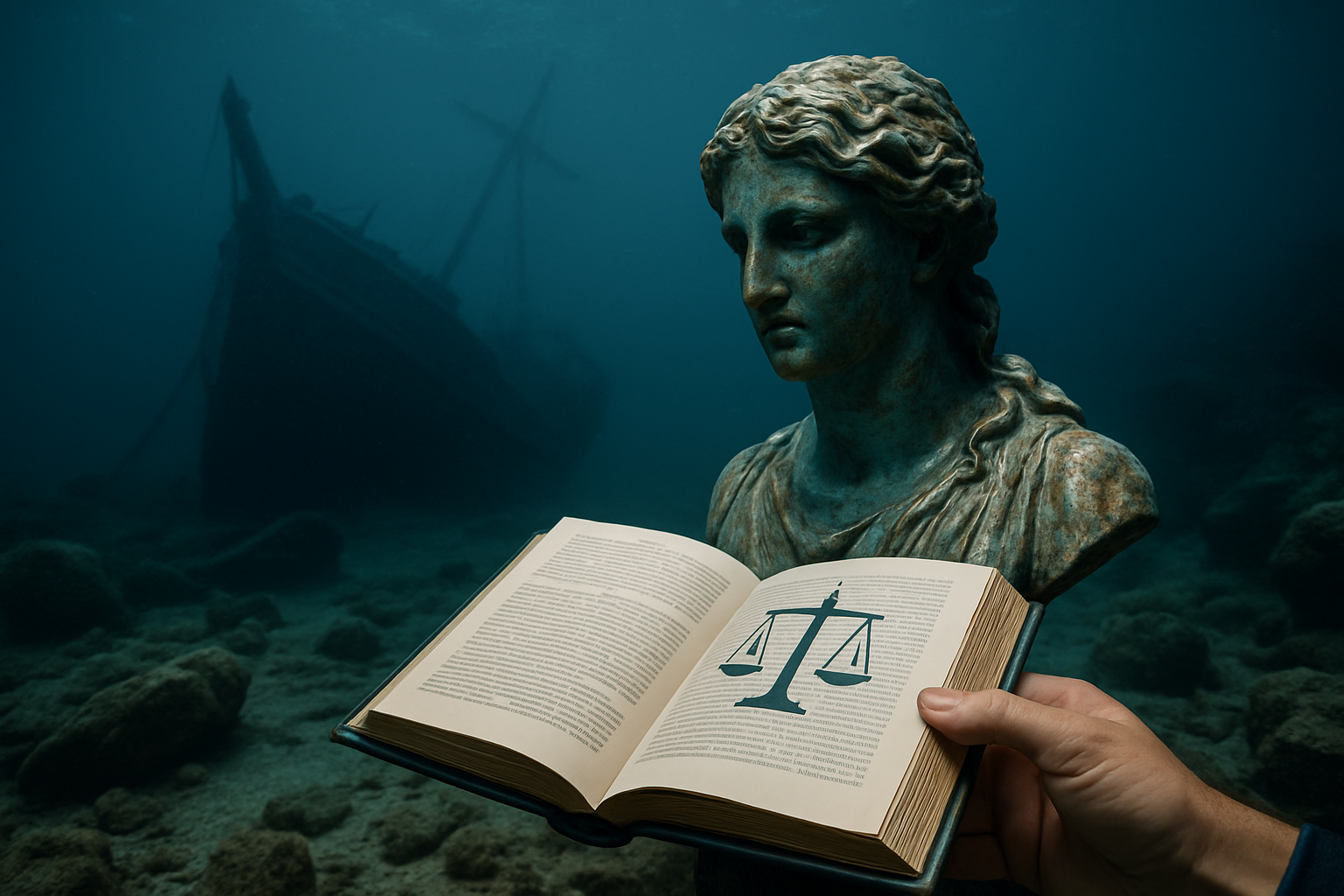Title: Navigating the Legal Labyrinth of Underwater Cultural Heritage
Introduction: In the depths of our oceans lie countless historical treasures, each with a story to tell. These submerged artifacts, shipwrecks, and ancient settlements form our underwater cultural heritage. But who owns these sunken relics? How are they protected? This article dives into the complex legal framework surrounding underwater cultural heritage, exploring the challenges of preservation, ownership disputes, and international cooperation in safeguarding our submerged past.

The UNESCO Convention: A Global Framework
In 2001, UNESCO adopted the Convention on the Protection of the Underwater Cultural Heritage, marking a significant milestone in international efforts to safeguard submerged historical sites. This convention establishes a comprehensive legal framework for the protection of underwater cultural heritage in international waters. It emphasizes in situ preservation as the preferred method of protection and discourages commercial exploitation of these sites. While the convention has been ratified by over 60 countries, notable maritime powers like the United States, United Kingdom, and Russia have yet to join, creating gaps in its global implementation.
Navigating Territorial Waters and Exclusive Economic Zones
The legal status of underwater cultural heritage becomes increasingly complex when considering territorial waters and exclusive economic zones (EEZs). Within territorial waters, coastal states have sovereign rights and can implement their own laws regarding underwater cultural heritage. However, in the EEZ, which extends up to 200 nautical miles from the coast, the situation becomes more nuanced. While coastal states have certain rights in their EEZ, the legal status of underwater cultural heritage in these areas remains a subject of debate and potential conflict.
The Salvage Law Conundrum
Traditional maritime salvage law, which rewards those who rescue vessels or cargo in peril, has long been at odds with the principles of underwater cultural heritage protection. Salvage law often incentivizes the recovery and sale of artifacts, conflicting with archaeological best practices and the goal of in situ preservation. Many countries have begun to adapt their laws to address this conflict, creating specialized regulations for historic wrecks and archaeological sites. However, the tension between salvage rights and heritage protection continues to be a source of legal disputes and ethical debates in the field.
Ownership Disputes and Sovereign Immunity
Determining ownership of underwater cultural heritage often leads to complex legal battles involving multiple parties. The principle of sovereign immunity, which protects state-owned vessels from claims by other nations, adds another layer of complexity. Famous cases like the Spanish galleon Nuestra Señora de las Mercedes have highlighted the intricate legal issues surrounding ownership claims, sovereign immunity, and the rights of archaeological discovery. These disputes often involve multiple jurisdictions and can take years to resolve, underscoring the need for clearer international guidelines on ownership and jurisdiction of underwater cultural heritage.
Technology and Legal Challenges
Advances in underwater exploration technology have dramatically increased our ability to locate and study submerged archaeological sites. However, these technological leaps also present new legal challenges. Remote sensing technologies, autonomous underwater vehicles, and deep-sea exploration capabilities raise questions about the legality of surveying and potentially disturbing underwater sites without physical presence. Additionally, the use of these technologies in areas beyond national jurisdiction creates regulatory gray areas that international law has yet to fully address.
The Future of Underwater Cultural Heritage Law
As our understanding of underwater cultural heritage grows, so too must the legal frameworks that protect it. Future developments in this field may include more robust international cooperation, the establishment of underwater cultural heritage zones, and the integration of new technologies into legal and regulatory frameworks. The challenge lies in balancing the interests of preservation, scientific research, and public access while respecting the rights of coastal states and addressing the complexities of international waters. As we continue to uncover the secrets of our submerged past, the evolution of underwater cultural heritage law will play a crucial role in ensuring these treasures are preserved for future generations.





